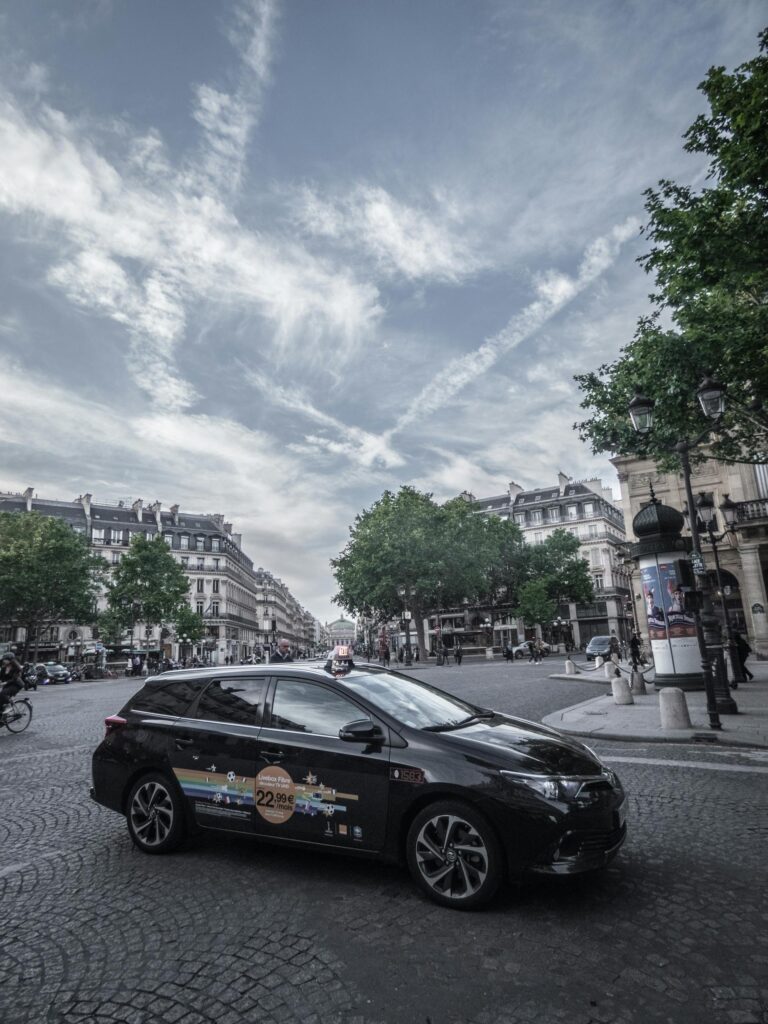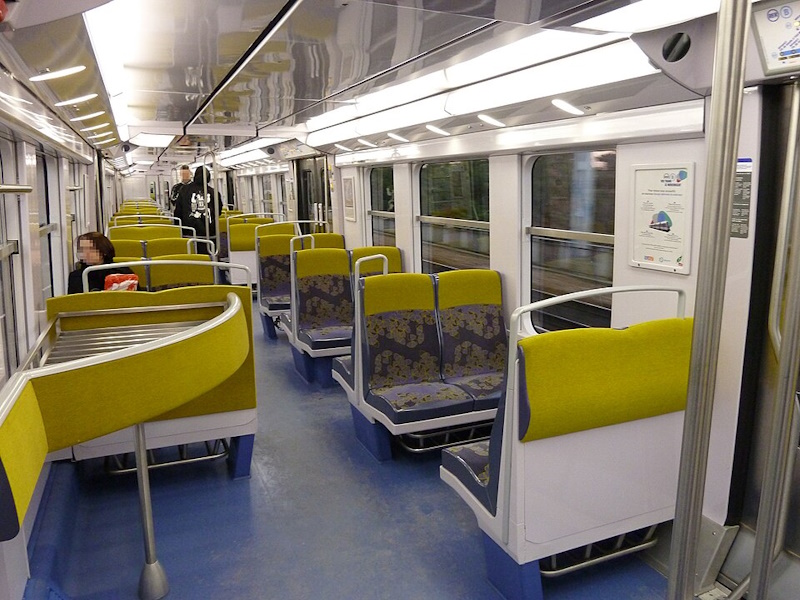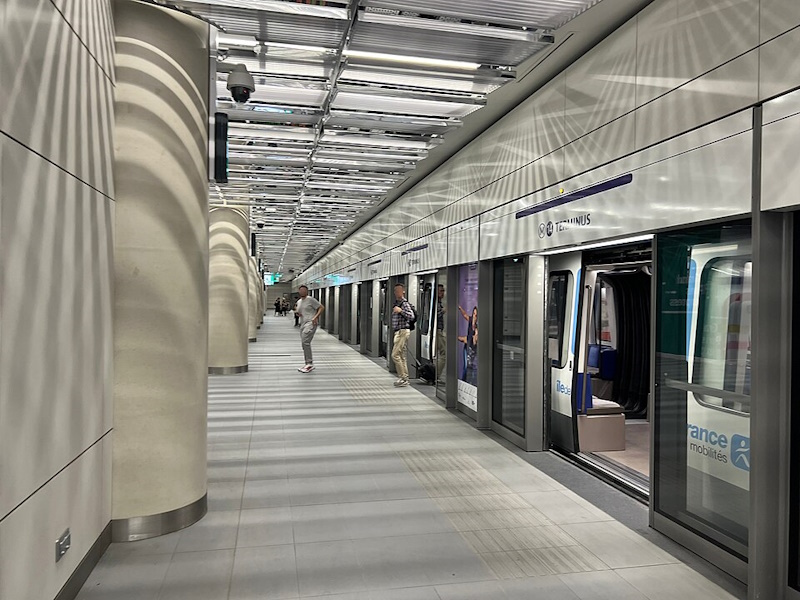Paris Airport Transfers: 7 Things Every First-Timer Should Know
Arriving in Paris after a long flight is exciting, but figuring out how to get from the airport to your hotel often feels overwhelming. There are multiple options – trains, taxis, Uber, and buses, each with its own advantages and drawbacks.
Here are some essential things to know before you land.
UPDATE: I’ve included 2 additional tips based on reader feedback
Short on time? Here’s a quick reference:
| Option | Cost (approx.) | Time | Pros | Cons |
|---|---|---|---|---|
| Official Taxi (CDG) | €56 Right Bank / €65 Left Bank | 40–60 min depending on traffic | Fixed fare, door-to-door, taxis use bus lanes | Traffic delays possible, more expensive than train |
| Official Taxi (Orly) | €36–41 depending on destination | 30–45 min depending on traffic | Fixed fare, door-to-door, avoids metro transfers | Traffic delays possible, not always faster |
| Uber | €40–100 depending on traffic & surge | 35–70 min depending on traffic | Can be cheaper than taxi at quiet times, app-based | Surge pricing, no fixed fare, traffic issues |
| RER B (CDG) | €13 per person | 35–45 min to center | Fast, cheap, frequent trains | Crowded, no luggage racks, stairs at stations, theft risk |
| Metro Line 14 (Orly) | €12 per person | 30–40 min to center | New, modern, direct into center | Less known by tourists, may still require metro transfer |
| Roissybus (CDG) | €16 per person | 45–60 min to Opéra Garnier | Direct bus, no transfers, central drop-off | Traffic delays, need onward transport from Opéra |
1. Fixed Taxi Fares From the Airports

Paris has regulated taxi fares from both Charles de Gaulle (CDG) and Orly airports. From CDG to the Right Bank the fixed rate is €56, and to the Left Bank it’s €65.
From Orly, it’s €36 or €41 depending on your destination. These fares include luggage, so there are no hidden add-ons.
Taxis also use bus lanes, which can cut travel time when roads are busy.
2. Taxis vs Uber
While taxis have fixed fares, Uber prices fluctuate with demand. Depending on traffic and the time of day, an Uber can cost less than a taxi or nearly double.
For example, travelers sometimes pay €40 on a quiet Sunday morning, while at peak times the price can surge to €100. Always compare in the app before deciding.
For rides back to the airport, Uber can occasionally be the cheaper option.
3. RER B Train From CDG

The RER B train connects CDG with central Paris for about €13 per person. It’s fast and cheap, often beating taxis during rush-hour traffic.
However, it’s not designed with tourists in mind. There are no luggage racks, seats are cramped, and the aisles need to be kept clear.
If you have light bags and your hotel is near an RER B stop, it’s a good option. If you’re carrying heavier luggage or need to transfer to the metro, the stairs and crowds can make it stressful.
4. Metro Line 14 From Orly

Orly now has a direct connection to central Paris via Line 14. It gets you into the city in under an hour.
The trains are modern, frequent, and far more luggage-friendly than older metro lines. For most travelers heading from Orly, this is the simplest and fastest way in.
5. Roissybus From CDG

Roissybus connects CDG with Opéra Garnier for about €16. It’s direct, so there are no train transfers, and it drops you right in the city center.
The stop is easy to find in Terminal 2 near the McDonald’s, which is handy if you’re arriving on Air Canada or other international carriers.
From the drop-off point, you can take a short taxi or metro ride to your hotel.
6. Metro/RER: Watch Out for Stairs
Accessibility is a major issue in Paris stations. Many metro and RER stations require carrying bags up and down flights of stairs.
Châtelet, one of the main transfer hubs, is particularly difficult with suitcases. Unless your hotel is very close to an RER B stop, expect at least one transfer involving stairs.
6. Safety With Bags
Pickpockets target travelers on the RER from CDG, especially near Gare du Nord. Keep your luggage within reach at all times.
Some people in traveler groups designate one person to watch bags while the others manage tickets or directions.
Use the standing spaces near doors, which have more room for suitcases, instead of squeezing them into narrow seating areas.
8. Pack Light for Public Transport
Suitcase size matters. A medium or large checked bag quickly becomes a burden on Paris transport, especially when climbing stairs or boarding crowded trains.
Two small wheeled carry-ons are much easier to manage. If you’re traveling as a couple, consider limiting yourselves to cabin-size luggage plus small bags. You’ll move faster and avoid frustration.
9. Payment and Communication With Taxis
All official Paris taxis accept credit cards. To avoid confusion with street names, many travelers write the hotel address on paper or show it on their phone. Even if you speak some French, it helps to have the spelling clear for the driver.
Tipping isn’t required, though rounding up a euro or two is appreciated.
In Summary
Getting from Paris airports to the city isn’t complicated once you know the options. If budget is your top priority and your hotel is near a station, the train makes sense. If convenience and comfort matter more, official taxis are a reliable choice. And with the new Line 14 from Orly, public transport there is finally straightforward.
